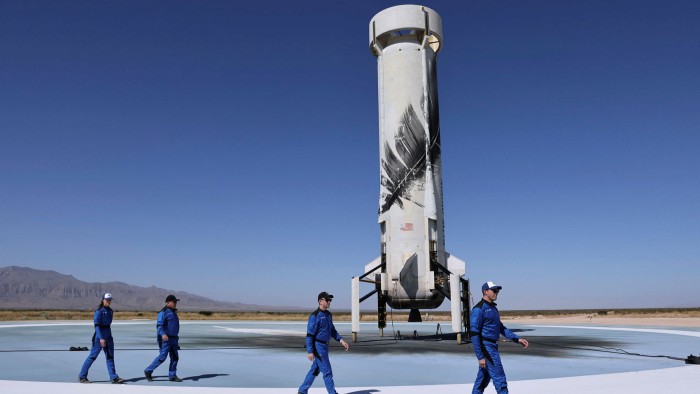Privatising astronauts means more will boldly go where few went before

Roula Khalaf, Editor of the FT, selects her favourite stories in this weekly newsletter.
The writer is a space economist and a senior researcher at Harvard Business School’s Institute for Strategy and Competitiveness
When the European Space Agency announced its astronaut selection programme this year, its head of talent acquisition, Lucy van der Tas, expected around 10,000 applications. That was based on the last astronaut callout back in 2008. In the 13 years since then, though, much has changed. The final number of applications exceeded 23,000.
As space economists debate what the industry will be worth in the coming years, the labour market is a good indicator of the trajectory. The changing role of what has traditionally been the industry’s most coveted job — the astronaut — shows how the industry is moving away from being primarily a publicly funded sector to becoming private-market oriented.
In 2008, Elon Musk’s SpaceX came perilously close to running out of time and money to commercialise the launch industry, despite its Falcon 1 rocket successfully delivering a dummy payload to orbit. Back in its early days, while human space flight was still mostly limited to government-backed efforts, SpaceX was legally contesting a Boeing, Lockheed Martin and United Launch Alliance monopoly on US Air Force launches. Its success enabled SpaceX to reach $100B valuation last month. With only four US Space Shuttle missions to the International Space Station in 2008, the barriers to the industry were impossibly high for businesses and individuals alike.
This exclusivity, while detrimental to corporate attempts to break into the sector, is exactly what created distinction among the astronaut corps. But that has begun to change. Back in 2008, the American astronaut was seen as the personification of excellence, the pinnacle of physical, academic and mental toughness and a symbol of the best that the nation could be. Yet, as the space industry moves towards professionalism this varnish may start to lose its shine, much as it did for pilots in the 1980s.
When air travel became as ubiquitous as getting on a bus, the glamour of the job diminished. Virgin Galactic wants to send more than 1,300 private astronauts to space per year starting this decade. Doubling the number of those who summit Mount Everest in a given year, will alter the perception of the space industry, particularly astronaut prestige.
This professionalisation of the space industry is largely driven by its financialisation. Businesses have rapidly made inroads into the sector, whether financial services, space-focused consultants, or media services such as Payload, a start-up newsletter focusing on space investment deal flow. People will soon be able to name more space start-up founders than Nasa astronauts.
Already today it is founders who are revered. The US no longer shows off Buzz Aldrin to Russia, but Jeff Bezos to China. And in a world where founders can become astronauts too, why would the best and brightest settle for just the spacesuit?
ESA’s fresh crop of applicants, who are currently undergoing rigorous testing, possess multiple PhDs, have lived in Antarctica, dived to the bottom of the Earth’s oceans and flown themselves around the world in home-built aircraft. Will these people be content with a government salary and long periods of isolation away from friends and family, before they fly to a private space station that has created a new class of billionaires? Or will they want to follow a dual trajectory of making millions in their chosen industry, allowing them to eventually turn their eyes to the skies?
We are in the last generation of astronauts who grew up with a public-sector space mentality. In another 10 years, Nasa, ESA and other agencies may turn to TikTok for their primary recruitment. Or perhaps, by that point, they will be applying to Nasa’s new privatised Astronaut Corp: Bezos’ Blue Origin.
Comments